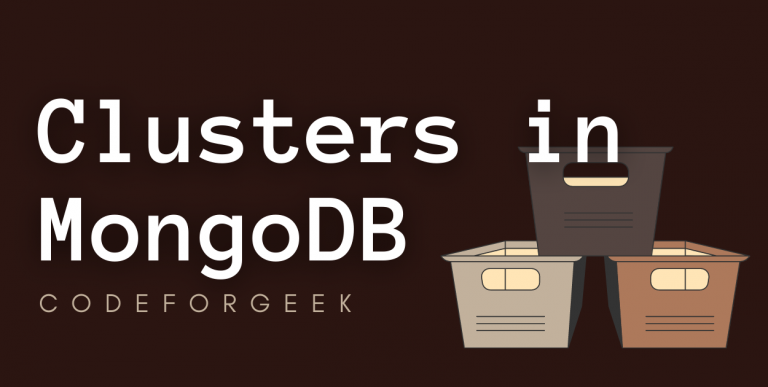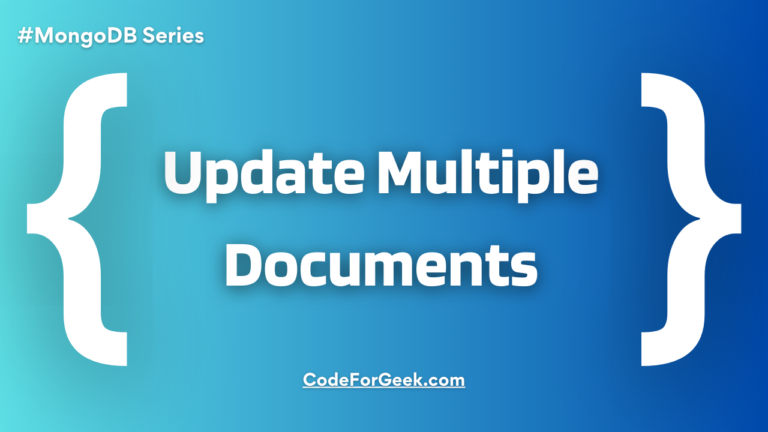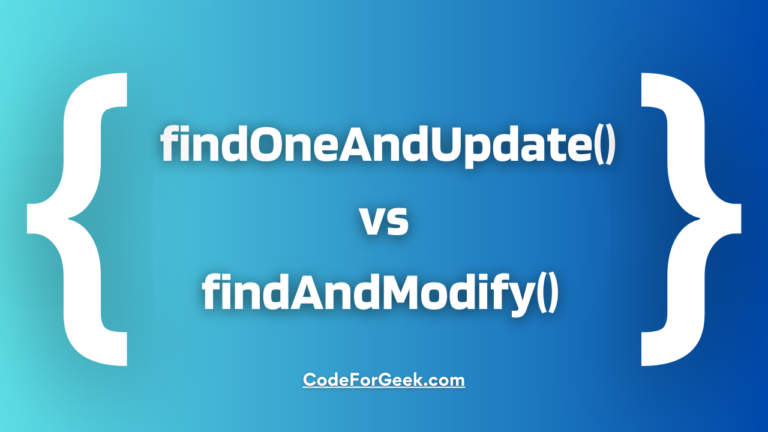A MongoDB cluster is used to denote a replica set of a collection of datasets distributed across multiple servers to speed up the overall processing during read and write operations. In this tutorial, we will learn about clusters in MongoDB, database clustering, the benefits of database clusters and the types of database clusters in detail.
Also Read: Difference Between MongoDB vs Mongoose
What is Database Clustering?
Database clustering is the process of connecting multiple servers or instances to a single instance. Data clusters are needed when a single server is unable to handle the amount of data or the number of requests to the database.
You have heard this term in cloud database which is used to connect multiple servers to a single database.
Advantages of Database Cluster
Many of you might be wondering why would we use a cluster. Why is a data cluster required for a database? Well, there are a lot of advantages associated with this process.
The following are some benefits of MongoDB clusters:
Data Redundancy
With database clustering, multiple computers cooperate to store data among themselves. It provides the advantage of data redundancy. Because all computers are synchronized, each node will have the same data as all other nodes.
We should avoid data duplication (redundancy) that creates data ambiguity in the database. Because of the synchronization, redundancy is reduced after clustering. In case of computer failure, all the data we have will be available to others.
Load Balancing
The database does not include load balancing or scalability by default. This should be brought by clustering. Load balancing, in essence, distributes the workload among the different computers that comprise the cluster.
This means more users can be supported, and if there is a large increase in traffic for any reason, there is a better chance that it will be able to handle the new traffic. One machine will not be able to handle all the hits. This allows for seamless scaling as needed. This is directly related to high availability. Without load balancing, a specific machine can be overworked, causing traffic to slow down and eventually drop to zero.
High Availability
When you can access a database, it means that it is accessible. The amount of time a database is considered accessible is called its high availability. The amount of availability you need depends heavily on the number of operations you run on your database and how often you run any kind of analytics on your data.
We can achieve extremely high levels of availability with database clustering due to load balancing and redundant machines. Even if one server is shut down, the database will remain accessible using other servers.
Monitoring & Automation
Clustering allows for the automation of many database processes while also allowing for the creation of rules to alert potential issues. This eliminates the need to go back and manually check everything.
Automation is useful with a clustered database because it allows for notifications when a system is overloaded. A MongoDB cluster also has a designated machine that serves as the database system for the entire database. This chosen machine can host scripts that run automatically for the entire database and interact with all database nodes.
Types of Database Clusters in MongoDB
In MongoDB, you can have two different types of MongoDB clusters for a database. This can be either a replica set or sharding. Let us understand what both mean and how they work, in brief.
Replica Set in MongoDB
A MongoDB replica set ensures replication by distributing data redundancy and high availability across multiple MongoDB servers.
If a MongoDB deployment failed to maintain a replica set, all data would be stored on a single server. If the main server crashes, all data is lost but not if a replica set is activated. As a result, we can see the significance of having a replica set for a MongoDB deployment right away.
In addition to fault tolerance, replica sets can provide additional read operations capacity for the MongoDB cluster by redirecting clients to the additional servers, significantly reducing the load of the cluster.
Replica sets can also be useful for distributed applications because of the data locality they provide, allowing for faster and parallel read operations to occur on the replica sets rather than having to go through one main server.
Sharded Cluster in MongoDB
Sharding is the process of storing data records on multiple machines. This is MongoDB’s way of providing data scalability. In other words, it makes it easy to manage large amounts of data.
Let me try to make it even easier for you by giving an example. Let’s say you have a laptop that is capable of storing up to 250 GB of data. Over time, you accumulate a large number of files and notice that your laptop’s performance suffers. The more storage space you use, the worse your laptop will perform.
Your application’s data is stored in the same way in commercial databases. They are put on machines. Sharing is needed to maintain the performance of those machines and get them to respond faster to your app.
Because your application will grow over time, the machine may not provide the same read and write throughput. As a result, it solves the problem of horizontal scaling.
Throughput is simply the amount of data or units of information that enter or exit the system. It also refers to the amount of data that the system can process in a given amount of time.
Summary
In this tutorial, we have learned about MongoDB Cluster, why it is used and what its types are. A cluster is a basically collection of multiple databases distributed across multiple servers to speed up the processing during read and write operations. We hope this tutorial helps you understand this concept.
Read More: Pretty Print in MongoDB
References
https://www.mongodb.com/basics/clusters
https://stackoverflow.com/questions/43445975/what-is-a-cluster-in-mongodb





